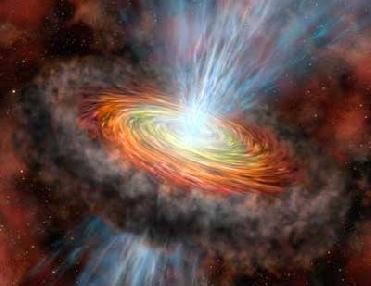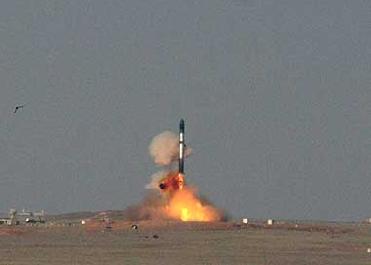
An artistic impression of the super massive Black hole. Photo: LiveScience
NEW DELHI (BNS): Scientists recently have observed an explosively brilliant light produced from a black hole's gobbling of matter through a fluke of physics called gravitational microlensing.
According to LiveScience, a transient phenomenon, gravitational microlensing is the curving of light around a star or galaxy due to the body's gravitational warping of space. In this case, the gravity acts like a lens that bends light from the distant black hole into a new focus for telescopes, temporarily magnifying the light source during an alignment of all the black hole, the massive object bending the light and Earth.
"This technique can probe regions just a few times larger than the black hole at the center of a quasar in a matter of minutes, rather than decades," LiveScience quoted researcher David Floyd of the University of Melbourne in Australia in an article.
A super massive black hole is the largest type of black hole in a galaxy. In the immediate outskirts of a black hole, swirling matter undergoes extreme compression and superheating, powering the hugely energetic displays of visible light known as a quasars.
�Until now, light from quasars has only appeared as an infinitesimally small point,� Floyd added.
Scientists are able to physically resolve the structure of the material falling into the black hole through microlensing technology. Information on "exquisitely small scales" such as the light's colours, spectral lines and direction in a black hole is obtained by the technology.
Scientists have also studied a quasar located in the constellation Hydra that dates from 9 billion years ago by using the data from the Magellan telescope in Chile and the NASA Hubble Space Telescope.
According to the article, the researchers said they have discovered that 99 percent of quasar light originates in a region "just a thousand times larger than the black hole itself."
The new technique will help scientists to analysis on the mechanism that causes material to fall inward continuously in the black hole, even as ordinary forces keep it in a stable orbit like that of the Earth spinning around the Sun.
 Previous Article
Previous Article













The Indian Air Force, in its flight trials evaluation report submitted before the Defence Ministry l..
view articleAn insight into the Medium Multi-Role Combat Aircraft competition...
view articleSky enthusiasts can now spot the International Space Station (ISS) commanded by Indian-American astr..
view article